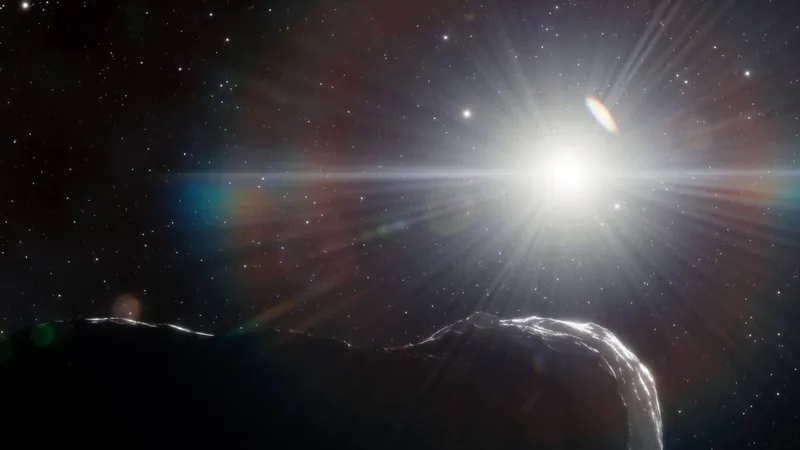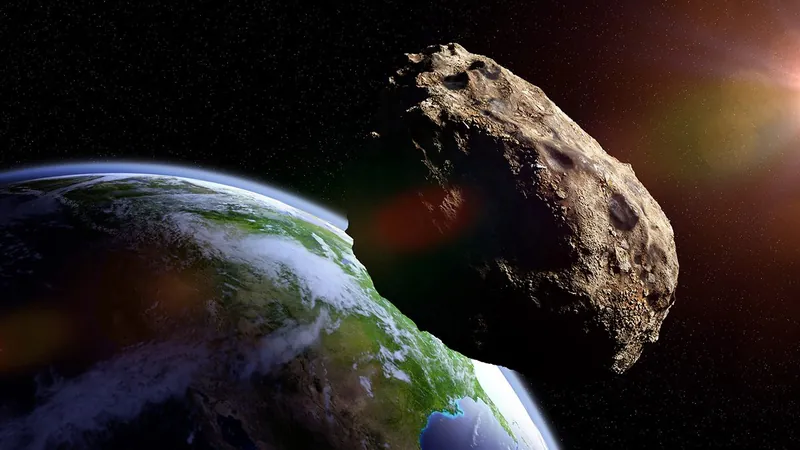
Asteroid Gold Rush: Could Earth's Next 'Mini-Moon' Spark a Mining Revolution?
2025-09-21
Author: Amelia
A New Era for Space Mining?
Not long ago, Earth was visited by a celestial intruder—a small asteroid dubbed 2024 PT5, which lingered in our orbit for nearly two months. While space scientists monitor such objects primarily for their potential threats, asteroids are also treasure troves filled with invaluable metals that could ignite a financial gold rush for space entrepreneurs.
The Hidden Riches of Asteroids
Asteroids primarily orbit the sun within the asteroid belt between Mars and Jupiter, and some contain precious metals like platinum, cobalt, iron, and even gold. In fact, NASA estimates that the metals in these asteroids could be worth a staggering $100 million for every person on Earth. Mining just a handful of the most resource-rich asteroids could translate to a jaw-dropping $1.5 trillion.
How Feasible is Asteroid Mining?
As alluring as those wealth projections are, a pressing question emerges: can we actually access these metals? Historically, the cost of sending missions to extract asteroid samples has ranged from $10 million to $150 million per gram, rendering traditional efforts economically unviable.
Most asteroids are located far from Earth, which adds to the logistical challenges and expenses. However, last year's 2024 PT5 mini-moon presented a rare opportunity. It might not have completed a full orbit, but its proximity sparked interest among space-mining startups eager to capitalize on accessible celestial resources.
Mini-Moons: The Future of Mining?
Joel Sercel, CEO of TransAstra, expressed optimism during PT5’s orbit, stating that with the right technology in place, capturing such a mini-moon could be efficient and financially rewarding. The difficulty comes in determining the frequency of these mini-moons, as fewer than ten have been reported in the last decade.
Yet, their short-lived nature makes them an enticing target for ambitious mining efforts. Despite the inherent challenges—like extreme temperatures and radiation—scientists are hopeful that advancements in detection technology will make future captures more feasible.
The Competition to Control Resources
Currently, 80-90% of rare earth metal exports are monopolized by Chinese companies, propelling U.S. firms and other nations to explore new sourcing options, including asteroids. Materials crucial for technologies like wind turbines and solar panels lie in abundance among these celestial rocks.
What’s Holding Back Asteroid Mining?
Despite some successful asteroid contact missions, a thriving mining industry remains elusive. The rapid spin of asteroids complicates landing operations, as they lack the strong gravity found on Earth or Mars. Instead, companies like Tethers Unlimited and TransAstra are innovating methods to catch rather than land on asteroids.
TransAstra aims to harness concentrated sunlight to vaporize ice on asteroids, allowing for an economical extraction of valuable metals. Unfortunately, timing is critical; the opportunity to mine PT5 slipped by just before their systems were ready.
The Future Awaits
NASA’s upcoming Psyche mission set for 2029 aims to explore a metal-rich asteroid, potentially paving the way for a new era of resource extraction. This mission could yield materials worth quadrillions, triggering significant shifts in the global economy.
Yet, challenges abound—the influx of materials might cause prices to plummet, paralleling dynamics seen in the oil industry.
While the dream of asteroid mining tantalizes many, the road to reality requires patience, substantial investment, and innovative solutions to complex challenges.









 Brasil (PT)
Brasil (PT)
 Canada (EN)
Canada (EN)
 Chile (ES)
Chile (ES)
 Česko (CS)
Česko (CS)
 대한민국 (KO)
대한민국 (KO)
 España (ES)
España (ES)
 France (FR)
France (FR)
 Hong Kong (EN)
Hong Kong (EN)
 Italia (IT)
Italia (IT)
 日本 (JA)
日本 (JA)
 Magyarország (HU)
Magyarország (HU)
 Norge (NO)
Norge (NO)
 Polska (PL)
Polska (PL)
 Schweiz (DE)
Schweiz (DE)
 Singapore (EN)
Singapore (EN)
 Sverige (SV)
Sverige (SV)
 Suomi (FI)
Suomi (FI)
 Türkiye (TR)
Türkiye (TR)
 الإمارات العربية المتحدة (AR)
الإمارات العربية المتحدة (AR)